Yaqi Cai
IterComp: Iterative Composition-Aware Feedback Learning from Model Gallery for Text-to-Image Generation
Oct 09, 2024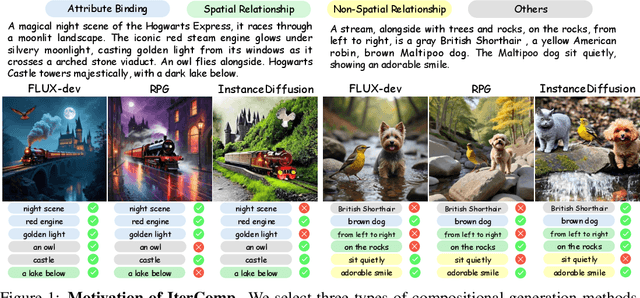

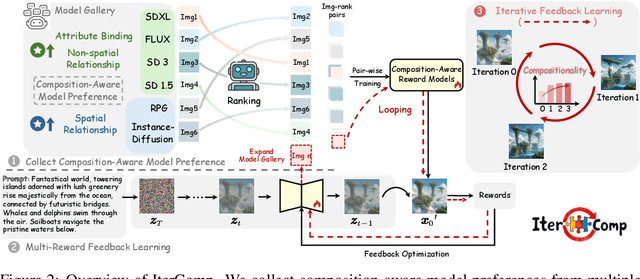
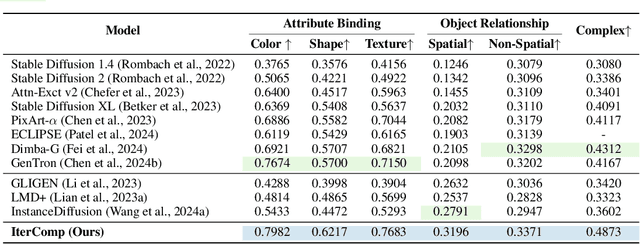
Abstract:Advanced diffusion models like RPG, Stable Diffusion 3 and FLUX have made notable strides in compositional text-to-image generation. However, these methods typically exhibit distinct strengths for compositional generation, with some excelling in handling attribute binding and others in spatial relationships. This disparity highlights the need for an approach that can leverage the complementary strengths of various models to comprehensively improve the composition capability. To this end, we introduce IterComp, a novel framework that aggregates composition-aware model preferences from multiple models and employs an iterative feedback learning approach to enhance compositional generation. Specifically, we curate a gallery of six powerful open-source diffusion models and evaluate their three key compositional metrics: attribute binding, spatial relationships, and non-spatial relationships. Based on these metrics, we develop a composition-aware model preference dataset comprising numerous image-rank pairs to train composition-aware reward models. Then, we propose an iterative feedback learning method to enhance compositionality in a closed-loop manner, enabling the progressive self-refinement of both the base diffusion model and reward models over multiple iterations. Theoretical proof demonstrates the effectiveness and extensive experiments show our significant superiority over previous SOTA methods (e.g., Omost and FLUX), particularly in multi-category object composition and complex semantic alignment. IterComp opens new research avenues in reward feedback learning for diffusion models and compositional generation. Code: https://github.com/YangLing0818/IterComp
Novel Class Discovery for Ultra-Fine-Grained Visual Categorization
May 10, 2024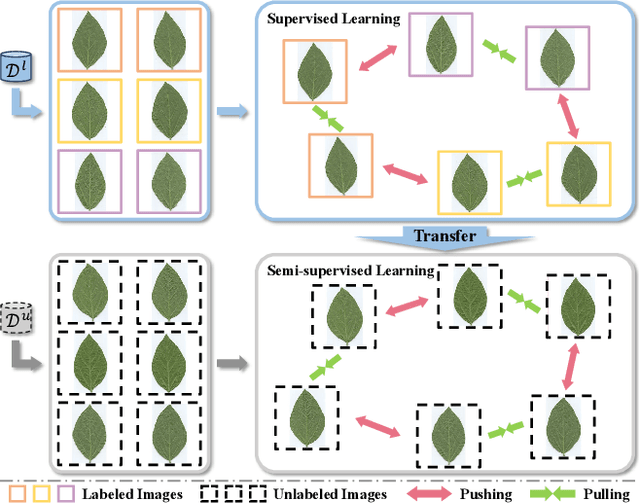


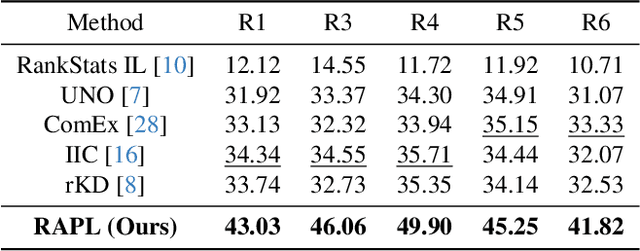
Abstract:Ultra-fine-grained visual categorization (Ultra-FGVC) aims at distinguishing highly similar sub-categories within fine-grained objects, such as different soybean cultivars. Compared to traditional fine-grained visual categorization, Ultra-FGVC encounters more hurdles due to the small inter-class and large intra-class variation. Given these challenges, relying on human annotation for Ultra-FGVC is impractical. To this end, our work introduces a novel task termed Ultra-Fine-Grained Novel Class Discovery (UFG-NCD), which leverages partially annotated data to identify new categories of unlabeled images for Ultra-FGVC. To tackle this problem, we devise a Region-Aligned Proxy Learning (RAPL) framework, which comprises a Channel-wise Region Alignment (CRA) module and a Semi-Supervised Proxy Learning (SemiPL) strategy. The CRA module is designed to extract and utilize discriminative features from local regions, facilitating knowledge transfer from labeled to unlabeled classes. Furthermore, SemiPL strengthens representation learning and knowledge transfer with proxy-guided supervised learning and proxy-guided contrastive learning. Such techniques leverage class distribution information in the embedding space, improving the mining of subtle differences between labeled and unlabeled ultra-fine-grained classes. Extensive experiments demonstrate that RAPL significantly outperforms baselines across various datasets, indicating its effectiveness in handling the challenges of UFG-NCD. Code is available at https://github.com/SSDUT-Caiyq/UFG-NCD.
RealCompo: Dynamic Equilibrium between Realism and Compositionality Improves Text-to-Image Diffusion Models
Feb 20, 2024
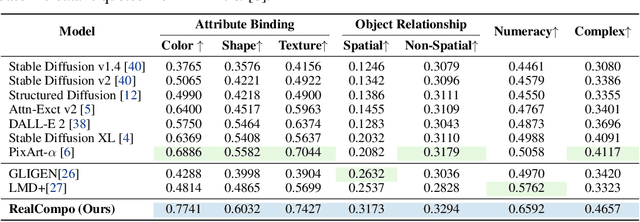
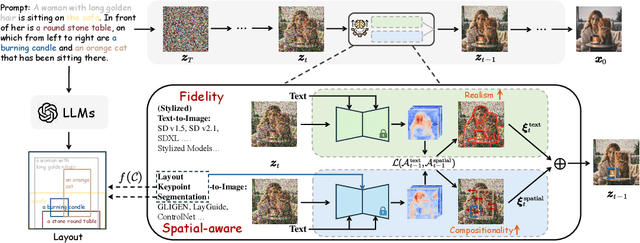

Abstract:Diffusion models have achieved remarkable advancements in text-to-image generation. However, existing models still have many difficulties when faced with multiple-object compositional generation. In this paper, we propose a new training-free and transferred-friendly text-to-image generation framework, namely RealCompo, which aims to leverage the advantages of text-to-image and layout-to-image models to enhance both realism and compositionality of the generated images. An intuitive and novel balancer is proposed to dynamically balance the strengths of the two models in denoising process, allowing plug-and-play use of any model without extra training. Extensive experiments show that our RealCompo consistently outperforms state-of-the-art text-to-image models and layout-to-image models in multiple-object compositional generation while keeping satisfactory realism and compositionality of the generated images. Code is available at https://github.com/YangLing0818/RealCompo
 Add to Chrome
Add to Chrome Add to Firefox
Add to Firefox Add to Edge
Add to Edge